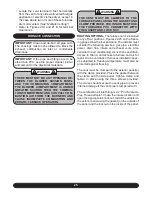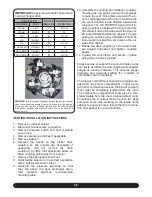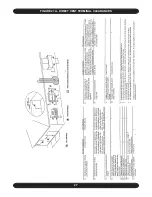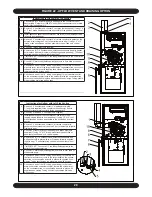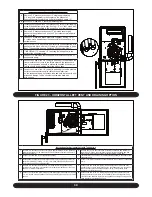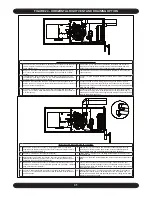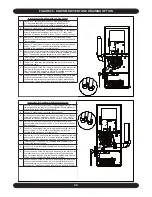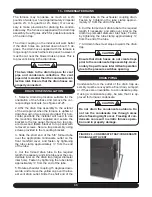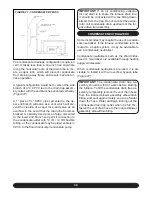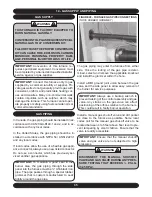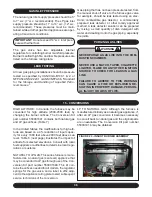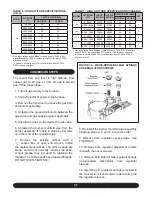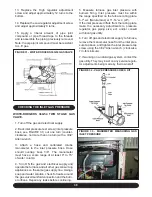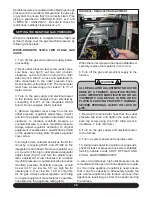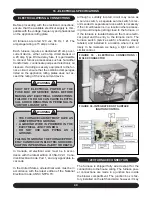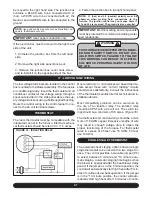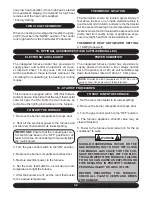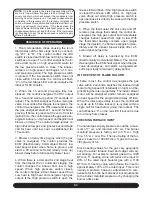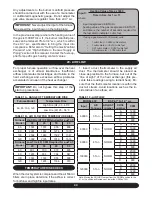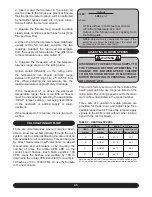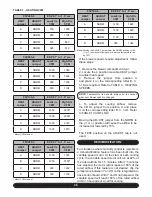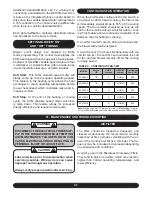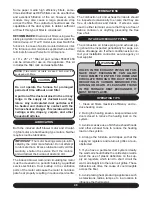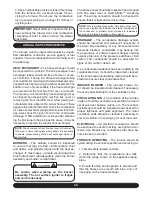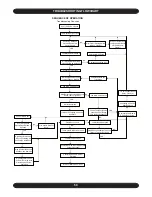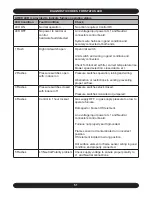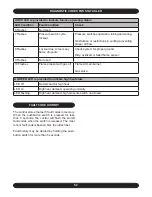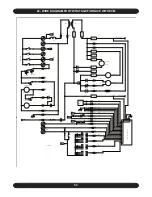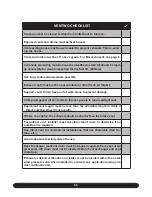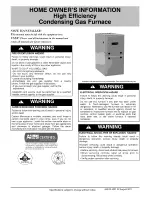
39
!
!
If problems were encountered with obtaining enough
pressure on the manifold, first examine the gas pip-
ing system to ensure that it is correctly sized. Pipe
sizing is specified in CAN/CGA-B-149.1 & 2, and
in NFPA 54 / ANSI Z223.1. Be sure to check for
restrictions, partially closed valves, etc.
SETTING THE MANIFOLD GAS PRESSURE
When the installation is completed to the
“Start-up
& Setup”
stage, test the gas manifold pressure by
following these steps:
WHITE-RODGERS 36G54 TWO STAGE GAS
VALVE.
1. Turn off the gas and electrical supply before
proceeding.
2. Back outlet pressure test screw (outlet pres-
sure boss, see fig.31) out one turn (counter-
clockwise, not more than one turn) with a 3/32”
Allen wrench. Attach a hose and calibrated U-
tube manometer to the outlet pressure boss.
Hose should overlap boss 3/8”. The manometer
must have a scale range of at least 0” to 15” of
water column.
3. Turn on the gas supply and electrical power
to the furnace and energize main solenoid by
connecting R to W1 on the integrated control
board. Do not energize the HI solenoid
4. Remove regulator cover screw from the low
outlet pressure regulator adjust tower (fig.31)
and turn the plastic regulator adjustment screw
clockwise to increase manifold pressure or
counterclockwise to reduce manifold pressure.
Always adjust regulator according to original
equipment manufacturer’s specifications listed
on the appliance rating plate. Replace regulator
cover screw.
5. Energize main solenoid as well as the HI ter-
minal by connecting R/W1 and W1/W2 on the
integrated control board. Remove regulator cov-
er screw from the high outlet pressure regulator
adjust tower (fig.31) and turn the plastic regu-
lator adjustment screw clockwise to increase
manifold pressure or counterclockwise to reduce
manifold pressure. Manifold pressure should
be set to 1.5” w.c low fire, 3.5” w.c high fire for
natural gas, 4.0” w.c low fire, 10.5” w.c high fire
for LP gas. Always adjust regulator according
to original equipment manufacturer’s specifica-
tions listed on the appliance rating plate.
When the correct pressure has been established,
securely replace the regulator cover screw.
6. Turn off the gas and electrical supply to the
furnace.
WARNING
ALL REGULATOR ADJUSTMENTS MUST BE
DONE BY A TRAINED, QUALIFIED TECHNI-
CIAN. IMPROPER MODIFICATIONS OR AD-
JUSTMENTS CAN RESULT IN FIRE OR EX-
PLOSION CAUSING PROPERTY DAMAGE,
SEVERE PERSONAL INJURY OR LOSS OF
LIFE.
7. Remove the manometer hose from the outlet
pressure tap boss, and tighten the outlet pres-
sure tap screw using the 3/32” Allen wrench.
(clockwise, 7 in-lb minimum).
8. Turn on the gas supply and electrical power
to the furnace.
9. Turn on system power and energize valve.
10. Using a leak detection solution or soap suds,
check for leaks at pressure boss screw. Bubbles
forming indicate a leak. SHUT OFF GAS AND
FIX ALL LEAKS IMMEDIATELY
In some circumstances, high inlet pressure can be
remedied with the use of an inline appliance regula-
tor. If an inline appliance regulator is used, ensure
that it has the capacity to adequately handle the
gas volume required by the furnace and any other
appliances receiving gas from the header serving
the furnace.
FIGURE 34 - REGULATOR ADJUSTMENT

